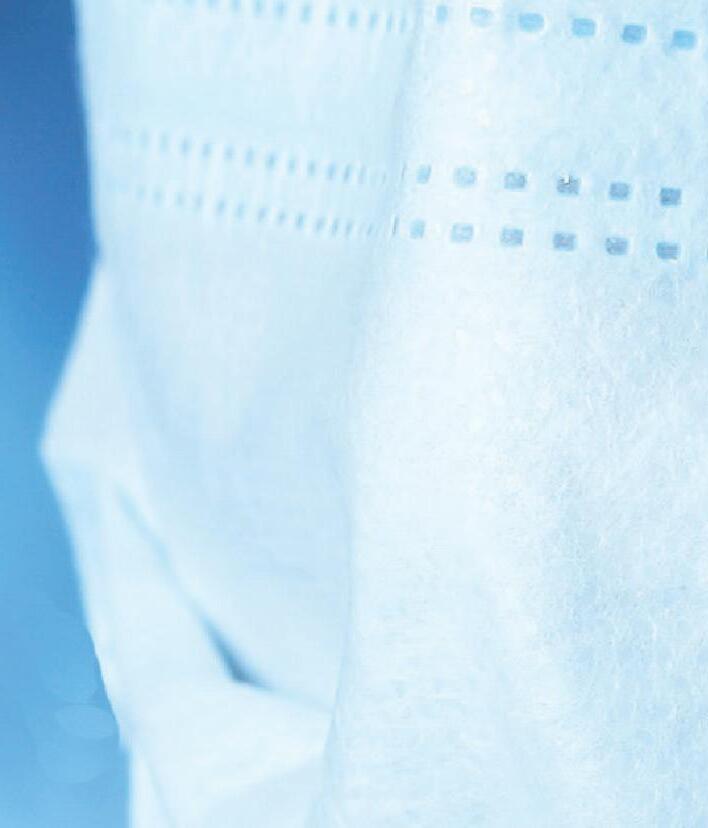














Breast cancer is the most commonly diagnosed cancer among American women. So, it matters where you go for breast care and treatment.
highest quality breast care,” said Dr. Laura Ragauskaite, General and Breast Surgeon, and Medical Director of Silver Cross’s NAPBC accreditation program.

With Silver Cross SCHedule NOW, you can easily schedule appointments online from anywhere!




The Silver Cross Center for Breast Health in New Lenox is accredited by the National Accreditation Program for Breast Centers (NAPBC), a quality program administered by the American College of Surgeons (ACS).
“This accreditation demonstrates that we are committed to providing comprehensive patient-centered breast care close to home.”



Schedule appointme nts for:
S c re e ning mamm o grams
$49 Heart Scan
Diagnostic imaging (CT, M RI , X- ray)
D exa S c ans Doctor/Provide
Ul trasounds
L ab tests
Urge nt C are
Scan the QR code or visit silvercross.org/schedule - now
To achieve voluntary NAPBC accreditation, a breast center demonstrates compliance with the NAPBC standards that address a center’s leadership, clinical services, research, community outreach, professional education, and quality improvement for patients. Breast centers seeking NAPBC accreditation undergo a site visit every three years.
As a NAPBC-accredited center, the Silver Cross Center for Breast Health is committed to maintaining levels of excellence in the delivery of comprehensive, patient-centered, multidisciplinary care resulting in highquality care for patients with breast disease. Patients can be confident that their breast care team includes health care professionals from a variety of disciplines who are committed to working together to provide the best care available through their entire course of treatment.
Patients receiving care at a NAPBCaccredited center also have access to information on clinical trials and new treatment options, genetic counseling, and patient-centered services including psychosocial support, rehabilitation services, and survivorship care.
“Patients who come to the Silver Cross Center for Breast Health can expect the
Accreditation by the NAPBC is granted only to those programs that are committed to providing the best possible care to patients with breast cancer. The NAPBC provides the structure and resources to develop and operate a high-quality breast center and accredited program. Patients receiving care at this NAPBC-accredited center have access to:
• comprehensive care, including a full range of state-of-the-art services
• a multidisciplinary team approach to coordinate the best treatment options
• information about ongoing clinical trials and new treatment options
The National Accreditation Program for Breast Centers represents a consortium of national, professional organizations dedicated to the quality of care of patients with diseases of the breast. Its board membership includes professionals from more than 20 national organizations that represent the full spectrum of breast care. For more information, visit https://www. facs.org/quality-programs/napbc.
For more information or to schedule a mammogram, visit silvercross.org
Dr. Breast of Silver program. demonstrates providing breast is that are possible cancer. structure and operate a accredited at this access including state-of-the-art approach treatment clinical options Accreditation Program for consortium organizations of patients board professionals from organizations that breast care.
https://www.
facs.org/quality-programs/napbc. schedule a silvercross.org
Breast cancer affects women in every corner of the globe. Although it is much more prevalent in women, men also can develop breast cancer because their bodies contain some breast tissue where the cancer takes root.
The World Health Organization says breast cancer was the most common cancer in women in 157 countries out of 185 in 2022. Roughly half of all breast cancers occur in women with no specific risk factors other than sex and age. As a result, the approach to breast cancer often is reactive rather than proactive. However, for individuals with an elevated risk of breast cancer, namely a family history of breast cancer or an inherited genetic link, surgery might be considered as a proactive measure.
Surgery to reduce breast cancer risk goes by different names. Macmillan Cancer Support in the United Kingdom calls it risk-reducing breast surgery. Other organizations, like the Cleveland Clinic, call it a prophylactic mastectomy, and the Mayo Clinic refers to it as a preventative mastectomy. No matter the name, the outcome is the same. A prophylactic (preventative) mastectomy is a surgery to remove one or both breasts, says the Cleveland Clinic. This type of surgery may be recommended by health care

Bproviders for individuals with high risk of developing breast cancer, such as those who have a BRCA1 or BRCA2 gene mutation. Macmillian Cancer Support says this preventative surgery can lower the risk of getting breast cancer by roughly 95 percent for those who undergo bilateral mastectomy. It is not possible to remove all breast tissue, which is why there is still a small chance that breast cancer can develop even after surgery.
There are different types of preventative mastectomy surgeries. The bilateral (double) is the most extensive in that both breasts are removed. A contralateral mastectomy removes the healthy breast in people who have cancer in the other breast. A skin-sparing mastectomy removes the areola and nipple, then removes breast tissue through that small incision. A nipplesparing mastectomy removes only the
reast cancer incidence rates vary by age and location. BreastCancer.org reports that breast cancer incidence rates in the United States began decreasing in 2000 after increasing for the previous two decades. Some researchers believe the decrease was partially due to the reduced use of hormone replacement therapy (HRT). Even if breast cancer incidence rates in the U.S. are down overall, researchers at Washington University School of Medicine in St. Louis have found diagnoses of breast cancer have increased steadily in women under age 50 over the past two decades. For most women, regular breast cancer screening does not begin until at least age 40, so younger women diagnosed with breast cancer tend to have later-stage tumors and a more advanced disease. Similar findings have been noticed in Canada.
An Ottawa-based study published in the Canadian Association of Radiologists Journal found that rates of breast cancer in women as young as their twenties have been increasing. The research team behind the study discovered a 45 percent increase in cases over the past 35 years. Many women have no identifiable risk factors prior to diagnosis, so what is fueling the increase remains a mystery.

breast tissue without affecting the nipple or areola. Finally, a double mastectomy with reconstruction removes both breasts and then reconstructs them using tissue from elsewhere in the body or implants.
Brigham and Women’s Hospital says health care experts can discuss the pros and cons of prophylactic surgery for those who are at high risk. Women who choose to proceed with the surgery will find oncologists typically work in conjunction with plastic surgeons to help patients achieve the best results with as few procedures as possible.
Typically, those who have undergone preventative mastectomy will not need further screening tests for breast cancer. However, it is still adviseable to check the breast area regularly for any abnormalities due to the small amount of breast tissue that remains. The Cleveland Clinic says recovery time varies after the procedure, but it can be three to four weeks on average, or up to eight weeks if a breast reconstruction also has occurred. It may take several months before individuals can resume normal activities.
Preventative surgery is an option for those who have very high risk for breast cancer and want to reduce their risk of developing the disease.





















The term “breast cancer” does not describe a single type of cancer, but rather several forms of a disease that can develop in areas of the breast. The American Cancer Society says breast cancer type is determined by the specific cells in the breast that become cancerous. There are many different types of breast cancer, and the medical community’s understanding of the disease is based on decades of research and millions of patients treated.
In 2001, Dr. Charles Perou first classified breast cancer into subtypes based on genomic patterns. The Breast Cancer Research Foundation says breast cancer is broadly divided into two types: non-invasive breast
Acancers and invasive breast cancers. Non-invasive breast cancers are called Stage 0 breast cancers or carcinomas in situ. These are thought to be the precursors to breast cancer, says the BCRF. While non-invasive breast cancers are not initially life-threatening, if left untreated, they can develop into invasive breast cancers, which can be fatal.
Here is a look at some of the different types of breast cancer.
• Invasive ductal carcinoma: This is the most common type of breast cancer, advises the National Breast Cancer Foundation, Inc.®. Invasive ductal carcinoma accounts for 70 to 80 percent of all breast cancer diagnoses in women and men. This cancer forms
in the milk ducts and spreads beyond.
• Invasive lobular carcinoma: This is the second most common type of breast cancer, accounting for 10 to 15 percent of diagnoses, says the BCRF. Invasive lobular carcinoma originates in the milk-producing glands of the breast known as lobules. Tumors that form due to invasive lobular carcinoma more commonly grow in lines in the breast rather than in lumps, so they present differently on a mammogram.
• Inflammatory breast cancer: Inflammatory breast cancer is a rare, fast-growing type of breast cancer. The inflammatory name comes from the appearance of the skin of the breast. It looks red and inflamed, which is caused by breast cancer cells blocking lymph channels in the breast and skin, says Breast Cancer Now, a research and support charity.
• Tripe-negative breast cancer: The NBCF says a diagnosis of triplenegative breast cancer means the three most common types of receptors known to cause most breast cancer growths are not present in the cancer tumor. These receptors are estrogen, progesterone and the HER2/neu gene. Since the tumor cells lack necessary receptors, certain treatments like
s women enter perimenopause and begin the transition that will ultimately lead to menopause, many doctors prescribe hormone pills to help regulate menstruation cycles and ease certain symptoms. Compared to regular birth control pills that contain 30 to 50 micrograms of estrogen, a doctor may suggest a low-dose pill that contains between 10 and 35 micrograms of estrogen. These levels can be increased as needed. WebMD says that, in addition to preventing pregnancy, which can still occur in perimenopause, low dose pills often regulate heavy or irregular menstrual periods and may offer protection from ovarian and uterine cancers. The pills also may prevent bone loss, which leads to osteoporosis. It’s important to note that contraceptives come with an elevated risk for breast cancer and blood clots, particularly for those with a history of heart disease and breast cancer. So doctors should be consulted about the pros and cons and women should initiate an open and honest dialogue with their physicians to avoid any complications.
Invasive ductal carcinoma accounts for 70 to 80 percent of all breast cancer diagnoses in women and men.
hormone therapy and drugs that target these receptors are ineffective. Chemotherapy is still an option.
• Metastatic breast cancer: This type of breast cancer is also known as Stage IV breast cancer. Metastatic breast cancer originates in an area of the breast, but spreads (metastasizes) to another part of the body, most commonly the bones, lungs, brain, or liver, indicates BreastCancer.org. Individuals hoping to learn more about breast cancer should be aware that there are various types of the disease. Which type an individual has is an important variable doctors consider as they plan a course of treatment.



Join us Saturday, October 19th from 11am-3pm
For eight years in a row, Hawk Volkswagen located in Joliet will team up in a partnership with Pink Heals Joliet Chapter for a Think Pink event to be held on the dealership grounds on Saturday October 19th from 11am to 3pm. This event takes place in honor of breast cancer awareness month. Pink Heals of Joliet will bring out its signature pink fire trucks and sold merchandise, while Hawk VW will raffle off tickets for professional sport events, hand out free pink ribbons in honor of breast cancer awareness and accepted donations to go to the Pink Heals Joliet Chapter non-profit in order to help those who battle with finances.
“We collect donations the entire month of October to support the mission of Pink Heals. It is a mission of hope for people in the community. Every single fundraised dollar stays right here in the community and we feel good about this”said Damian Gabrus, GM at Hawk VW.
Pink Heals supports women and their families, not causes. Although the main focus is the fight against cancer, they serve those in need, no matter the illness. Setting the example by being a true non-profit, comprised of all volunteers. The pink fire trucks and police cars can be spotted out in the community and are about love and hope. They inspire and bring caring right to the doorsteps of those in need.
If you would like to make a donation to the Pink Heals Joliet Chapter, donations are being accepted at Hawk Volkswagen located at 2861 W. Jefferson St., Joliet through the month of October.

Breast cancer affects millions of individuals each year. The World Cancer Research Fund International reports that breast cancer is the most commonly diagnosed cancer in women across the globe, affecting roughly 2.3 million women each year.
Despite the global prevalence of breast cancer, various organizations report high five-year survival rates, particularly among women whose cancers are detected in the earliest stages of the disease. In fact, a 2023 study published in the journal BMJ found that the risk for dying from breast cancer in the five years after an early-stage diagnosis fell to 5 percent in recent years, a notable improvement from the 14 percent risk of death that was reported in the 1990s. Increased survival rates for breast cancer are welcome news for women and their families. The higher survival rates are a byproduct of the tireless efforts of cancer researchers, who also have discovered links between the disease and certain lifestyle factors. Though there’s no way to eliminate one’s risk for breast cancer entirely, the American Cancer Society notes certain variables are within women’s control. With that in mind, women can consider these three strategies that can lead to improved overall health and might help women lower their risk for breast cancer as well.

women had between a 12 and 21 percent lower risk for breast cancer than women who were the least physically active. The NCI also notes that additional studies have found that women who become more physically active after menopause also have a lower risk for breast cancer than those who do not.
1. Reach and maintain a healthy weight. The benefits of maintaining a healthy weight include a lower risk for heart disease and stroke, and women should know that weight and breast cancer risk are linked as well. According to the ACS, increased body weight and weight gain as an adult are linked to a higher risk of developing breast cancer. That’s particularly so among post-menopausal women. A 2023 study published in the journal BMC Women’s Health found that the chances of developing breast cancer increase among post-menopausal women who are obese.
2. Avoid a sedentary lifestyle. Exercise is one of the ways to achieve and maintain a healthy weight, so it makes sense that being physically
3. Limit or eliminate alcohol consumption. The ACS urges women who drink to consume no more than one alcoholic drink per day, noting that consumption of even small amounts of alcohol have been linked to an increased risk for breast cancer. Officials with the MD Anderson Cancer Center note that the link between alcohol consumption and breast cancer risk is low. However, the MDACC notes that alcohol can contribute to unwanted weight gain, thus increasing cancer risk. In addition, alcohol can increase levels of estrogen and other hormones associated with breast cancer.
It may be impossible to completely prevent breast cancer. However, women can embrace strategies that improve their overall health in ways that lower their risk for breast cancer.








There’s no question mammography helps reduce deaths by detecting breast cancer early when it’s most treatable and long before it can be felt.

For women at average risk of breast cancer, the American College of Radiology recommends an annual mammogram beginning at age 40.
Mammography really does save lives.
Offering three-dimensional mammography (digital breast tomosynthesis) in Channahon, Diamond-Coal City, Morris and Ottawa! Call 815-942-4105 to schedule your appointment. Self-referral without a physician’s order is accepted.





















